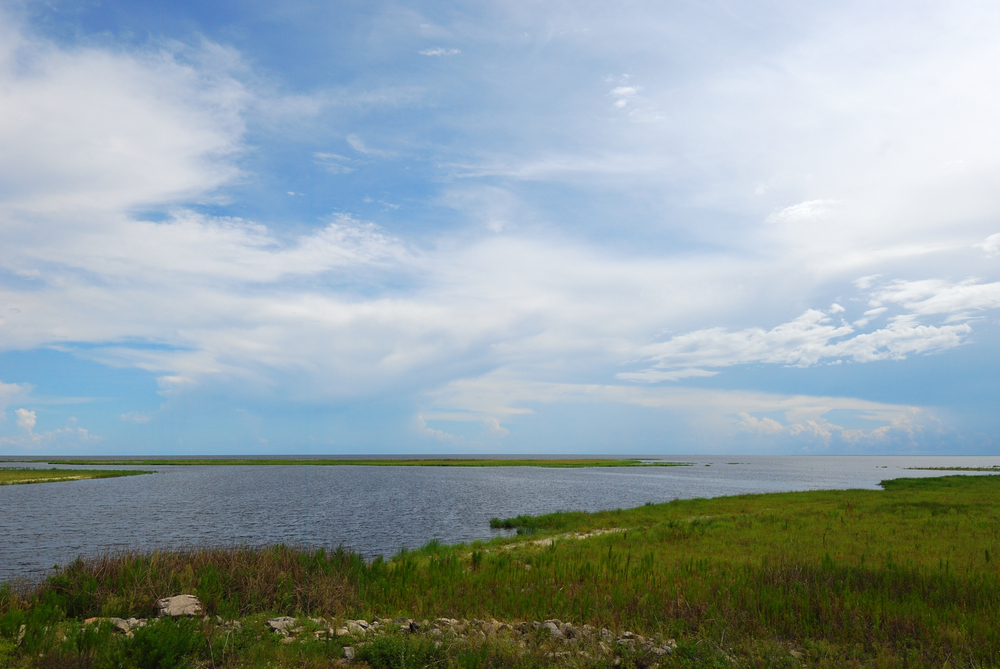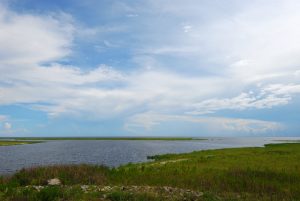Vegetable and specialty crop producers in the Southeast face many challenges, including labor, disease, trade and weather. An additional — often underappreciated and complicated — issue involves management and protection of fresh water resources. Access to adequate quantities of fresh water during the growing season is critical to production success. Protecting downstream receiving waters from potential adverse impact associated with agricultural land uses is no less important.
SECURING SUPPLY
In Florida, producers are facing increasing pressure to maximize water-use efficiency. This pressure stems from the fact that agriculture is no longer the largest water user in Florida. Public supply water use overtook agricultural water use in approximately 2012. Furthermore, in some regions during certain times of the year, total fresh water use from traditional sources of ground and surface water exceeds available supply. In these regions where demand exceeds supply, Florida law requires that state and regional governments engage in long-term water-supply planning activities. These water-supply plans are required to quantify estimates of future water-use demand and identify alternative water-supply projects to meet that estimated future need.
Florida is already the third most populated state in the country and continues to be one of the fastest growing states. Population growth, more than any other variable, will drive the increase in future estimated water demand. Agricultural water users are self-suppliers; they underwrite their own water supplies, including wells, pumps and pipes. They can’t pass on those costs to others. Therefore, traditional water resources from nearby ground or surface waters are the only available options.
Active participation in the development of regional water-supply plans is a key factor in assuring that all the available traditional sources of future water are not allocated to the public supply side of the ledger, leaving agriculture out in the cold. Public supply utilities have rate-paying customers which can offset the more expensive alternative water-supply sources such as expanding the reuse of treated waste water. Agriculture’s access to locally available ground and surface waters must be protected if the industry is to thrive and survive.
AVOIDING ADVERSE IMPACTS
In addition to assuring that the ag industry has future access to adequate quantities of fresh water, growers must remain vigilant and responsive to potential adverse impacts of production practices on water quality. Water-resource protection programs are governed by a combination of federal and state laws. The federal Clean Water Act directs states to develop and implement programs to protect water resources from degradation. Agriculture is a large land use throughout the country and has been identified as a significant contributor to local water-quality issues.
Nowhere are these issues more complex than in Florida. The state has one of the most diverse commodity production landscapes in the country, the largest concentration of springs networks in the world, the second largest freshwater lake in the lower 48 states, the iconic Everglades ecosystem and more than 1,300 miles of coastline. Combine those natural resource elements with one of the most comprehensive water-resource protection and restoration programs in the United States, and you have a recipe for conflict.
Fortunately, lawmakers in Florida over the last 25 years have consistently embraced the development and implementation of on-farm best management practices (BMPs) as the vehicle to address current and future water-quality issues. The primary focus of BMPs has been on better management of nutrients (nitrogen and phosphorus).
Under these state programs, the Florida Department of Agriculture and Consumer Services, working in cooperation with the Florida Department of Environmental Protection and the state’s five regional water management districts, assists producers in the enrollment of their lands and identification of applicable BMPs to implement based on the unique features of their land and production techniques. In exchange for the implementation of these applicable BMPs, landowners are given a presumption of compliance with water-quality standards.
An example of how successful BMP programs can be is illustrated in the impressive water-quality improvement within a 500,000-acre agricultural production area south of Lake Okeechobee immediately north of the Everglades. Annual phosphorus load reductions coming out of the Everglades Agricultural Area have been reduced by more than 55 percent since the implementation of BMPs in 1996 through a program administered by the South Florida Water Management District. Through the implementation of BMPs, in combination with other regional treatment, water-quality monitoring within Everglades National Park reveals that phosphorus concentrations are below the adopted standard of 10 parts per billion — the most restrictive phosphorus standard in the world. All of Florida’s agricultural producers can benefit from participating in similar BMP programs to meet water-resource restoration goals across the state.
Water-resource challenges are complex and will continue to be difficult to address. These challenges will not remain unique to Florida for long. Agricultural industry groups throughout the Southeast need to work together to be proactive and engaged to protect future access to adequate quantities of fresh water and to assure that the programs to address water-quality issues are practical and affordable to implement.
Rich Budell is executive director of the Florida Agribusiness Council.
This article was featured in the November issue of VSCNews magazine. If you would like to receive future issues of VSCNews magazine, click here.
Share this Post











